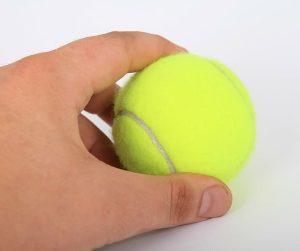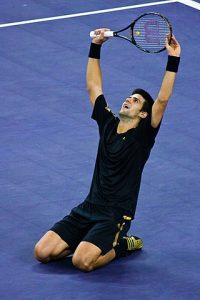We may earn money or products from the companies mentioned in this post.
Brief Overview of Tennis as a Popular Sport

Tennis, known for its fast-paced action and exhilarating matches, has captured the hearts of sports enthusiasts around the world With its origins dating back to the 19th century, this competitive sport has evolved into a global phenomenon that attracts millions of fans and players alike Whether it’s watching professional players battle it out on the grand slam courts or playing a friendly match with friends, tennis offers a unique blend of athleticism, strategy, and mental toughness
The Importance of Continuous Improvement in Tennis Skills

In order to excel in tennis and reach new heights in the sport, continuous improvement is vital As with any skill or craft, honing your tennis abilities requires dedication, perseverance, and a commitment to constant learning By continuously working on your technique, footwork, agility, and mental game, you can elevate your performance levels and unlock your full potential on the court
1 Technical Proficiency:
Developing sound technical skills is essential for success in tennis Mastering strokes such as forehand, backhand, volleys, serves, and overhead smashes not only enhances your shot-making ability but also improves consistency and control during matches
2 Footwork and Agility:
Moving swiftly across the court is crucial in tennis Improving footwork and agility helps you reach balls faster while maintaining balance and stability during shots Drills focusing on lateral movement, quick direction changes, and reaction speed can significantly enhance your overall movement on the court
3 Mental Toughness:
Tennis is not just physically demanding; it also tests one’s mental fortitude Developing mental toughness allows you to stay focused under pressure situations and maintain composure throughout challenging matches Techniques like visualization, positive self-talk, and mindfulness can help strengthen your mental game
How to Get Better at Tennis at Home

Improving your tennis skills doesn’t always require access to a tennis court or a training facility There are several ways you can enhance your game right from the comfort of your own home:
1 Fitness Training:
Fitness plays a crucial role in tennis performance Engage in exercises that improve cardiovascular endurance, strength, flexibility, and agility Activities like running, skipping rope, bodyweight exercises, yoga, and stretching routines can all contribute to your overall fitness level
2 Shadow Drills:
Shadow drills involve practicing tennis movements without hitting an actual ball By mimicking strokes and footwork patterns, you can reinforce muscle memory and work on improving technique even without a partner or a court
3 Watching Matches and Analyzing Strategies:
Take advantage of the vast array of professional tennis matches available for viewing online or on television Observe how top players strategize their moves, analyze their shot selection, and study their decision-making under different match scenarios This observational learning can provide valuable insights that you can incorporate into your own game
4 Mental Imagery:
Mental imagery is a powerful tool that allows you to visualize yourself playing successful shots and executing flawless techniques in your mind’s eye Spend time visualizing yourself performing well on the court – this helps build confidence and reinforces positive mental habits
In conclusion,
Developing Fundamental Tennis Skills at Home

Tennis is a sport that requires a combination of physical fitness, agility, and technique While many people may think that practicing tennis skills can only be done on the court, there are actually several ways to develop fundamental tennis skills right at home By understanding the basic tennis strokes and utilizing various techniques for practice, you can improve your game even without stepping foot on the court
Understanding the Basic Tennis Strokes
The foundation of any tennis player’s skill set lies in their ability to execute the basic strokes effectively These strokes include:
-
Forehand Stroke:
The forehand stroke involves hitting the ball with your dominant hand across your body’s centerline It is one of the most common and powerful shots in tennis -
Backhand Stroke:
The backhand stroke is executed with your non-dominant hand on top of the racket grip It requires proper footwork and coordination to generate power and accuracy -
Serve:
The serve is the shot used to start each point It involves tossing the ball into the air and striking it with an overhead motion, aiming to get it into play with power and precision -
Volley:
Volleys are shots hit before the ball bounces on your side of the court They require quick reflexes, good positioning, and soft hands to control both pace and direction
Techniques for Practicing Each Stroke at Home
If you’re unable to access a tennis court or simply want to supplement your training, there are several techniques you can employ for practicing each stroke at home:
-
Shadow Swinging:
Stand in front of a mirror or an open space and practice your strokes without a ball Visualize hitting the ball with proper form, focusing on your technique and footwork -
Wall Practice:
Find a flat wall with enough space and practice hitting against it This helps improve timing, control, and consistency as you work on your stroke mechanics -
Working with a Ball Machine or Rebounder Net:
If you have access to a tennis ball machine or a rebounder net, utilize them to simulate real-game situations This allows you to work on different strokes and improve your reactions
Setting up a Training Area in Your Backyard or Garage
To create an optimal training environment at home, consider setting up a designated area in your backyard or garage specifically for tennis practice Clear out any obstructions, ensure sufficient space for movement, and set up targets or markers to aim for during drills Having this dedicated space will help you focus on improving your strokes and overall game
In conclusion,
Developing fundamental tennis skills at home is not only possible but also beneficial for players of all levels By understanding the basic strokes, practicing techniques like shadow swinging and wall practice, and creating a training area in your own space, you can continue honing your skills even when you can’t make it to the court So grab your racket, find some open space at home, and get ready to take your tennis game to new heights!
Improving Physical Fitness and Conditioning for Tennis

When it comes to excelling in the game of tennis, physical fitness plays a crucial role The demands of the sport require players to possess not only skill and technique, but also a high level of physical conditioning This is where cardiovascular endurance, muscular strength and endurance, flexibility, and agility come into play
The Importance of Physical Fitness in Tennis Performance
Tennis is a fast-paced sport that requires players to move quickly across the court, make explosive movements, and sustain prolonged periods of intense activity Having good cardiovascular endurance allows players to maintain a high level of energy throughout matches or training sessions It ensures they can keep up with the pace of the game and recover quickly between points
Muscular strength and endurance are essential for generating power in shots such as serves and groundstrokes Strong muscles also help prevent injuries by providing stability to joints during quick changes in direction or sudden stops on the court
Flexibility and agility are key factors that contribute to a player’s ability to swiftly change direction, reach balls at extreme angles, and execute shots with precision Being flexible helps prevent muscle strains while agility enhances footwork and reaction time
Designing a Workout Routine Tailored to Tennis Players
To improve physical fitness specific to tennis, it’s important to incorporate exercises that mimic the movements performed on the court Here are some components that should be included in a tennis-focused workout routine:
-
Dynamic warm-up exercises:
Begin each session with dynamic stretches like leg swings, arm circles, and trunk rotations These help increase blood flow to the muscles while improving range of motion -
Tennis-specific strength training exercises:
Focus on exercises that target the lower body, upper body, and core Lunges and squats strengthen the legs, while push-ups and tricep dips build upper body strength Core exercises like planks and Russian twists improve stability and rotational power -
Cardio workouts for improving on-court stamina:
Incorporate activities such as running, cycling, or jumping rope to enhance cardiovascular endurance Interval training can be particularly effective in simulating the bursts of intense activity seen during a tennis match -
Stretching and yoga for flexibility and injury prevention:
Allocate time for static stretches after each workout to improve flexibility Additionally, incorporating yoga sessions into your routine can help increase mobility, balance, and mental focus
By following a well-rounded fitness program tailored to the demands of tennis, players can enhance their physical performance on the court Remember to always consult with a professional trainer or coach to ensure proper form and technique during exercises
Mastering Mental Aspects of Tennis Performance from Home

Tennis is not just a physical sport; it requires mental strength and focus to excel on the court Whether you are a professional player or an amateur looking to improve your game, mastering the mental aspects of tennis performance can give you a significant advantage The good news is that you can work on enhancing your mental game from the comfort of your own home Here are some key techniques to help you boost your focus and concentration:
Breathing exercises and meditation practices for relaxation and mental clarity
In the fast-paced world of tennis, finding moments of calmness and mental clarity can be challenging However, incorporating breathing exercises and meditation into your routine can do wonders for improving focus and reducing anxiety By taking deep breaths and focusing on your breath, you can calm your mind, increase self-awareness, and enhance concentration during both practice sessions and matches
Visualization techniques to improve shot accuracy and decision making in-game situations
The power of visualization cannot be underestimated when it comes to tennis performance By visualizing yourself executing successful shots with precision, you train your brain to create neural pathways that support improved muscle memory Additionally, visualizing different scenarios during matches helps improve decision-making skills under pressure Spend time mentally rehearsing your shots, strategies, and match situations to gain a competitive edge
Developing effective pre-match routines to ensure optimal performance levels during games

A well-established pre-match routine sets the stage for success in any tennis match It helps you get into the right mindset by preparing both mentally and physically Here are two essential elements of an effective pre-match routine:
Establishing goals before matches or practice sessions
Setting clear goals before stepping onto the court gives you direction and purpose Whether it’s improving your serve percentage or working on specific shot placements, having these goals in mind helps you stay focused and motivated throughout the match Make sure your goals are realistic, measurable, and achievable
Pre-match rituals for mental and physical preparation
Rituals can help create a sense of stability and routine before a match These can include warm-up exercises, stretching routines, listening to music that pumps you up, or engaging in positive self-talk Find rituals that work best for you and incorporate them into your pre-match routine to boost confidence and mental preparedness
Dealing with setbacks and adversity in tennis matches

Tennis is a game filled with ups and downs, but how you handle setbacks can make all the difference in your performance Here are two strategies to help you deal with adversity:
Developing resilience through self-talk and positive affirmations
Your internal dialogue greatly influences your mindset during difficult moments in a tennis match By practicing positive self-talk and using affirmations, you can build resilience and maintain a confident attitude even when facing challenges Remind yourself of past successes, focus on solutions rather than dwelling on problems, and believe in your ability to overcome obstacles
Learning from mistakes to improve future performance
Mistakes are an inevitable part of any sport, including tennis Instead of dwelling on them or getting discouraged by failures, view them as learning opportunities Analyze what went wrong without being overly critical of yourself Identify areas for improvement and develop strategies to address those weaknesses in future matches or practice sessions
Conclusion

Summary of key points on improving tennis skills at home
Throughout this article, we have explored various techniques and strategies that can help you improve your tennis skills from the comfort of your own home We discussed the importance of setting goals, creating a structured practice routine, and utilizing technology to analyze and track your progress Additionally, we explored the benefits of visualizing success, incorporating strength and conditioning exercises, and seeking virtual coaching or online resources for guidance
Encouragement for readers to implement the outlined techniques and strategies
Now that you have a comprehensive understanding of these techniques, it’s time to put them into action! By implementing these strategies into your daily routine, you’ll be able to make significant strides in improving your tennis skills Remember to stay disciplined and consistent with your practice sessions Embrace challenges as opportunities for growth, and don’t be afraid to step out of your comfort zone With dedication and perseverance, you’ll undoubtedly see improvements in your tennis game
Final thoughts on the benefits of practicing tennis at home
The beauty of practicing tennis at home is that it offers numerous benefits beyond skill development Not only does it provide convenience and flexibility by eliminating travel time to a court or training facility, but it also allows for focused individualized practice tailored specifically to areas that need improvement Furthermore, practicing at home fosters self-discipline and mental agility as you learn to motivate yourself without external pressures or distractions
In conclusion, by following the outlined techniques and strategies discussed in this article, you can take significant steps towards becoming a better tennis player right from the comfort of your own home So grab your racquet, find some open space indoors or outdoors, and start honing those skills today!
Useful Links

How can I practice Tennis at home – Singapore
10 Ways To Instantly Improve Your Tennis Game
How To Practice Tennis Alone
Practice The Correct Way (10 Tips To Improve Your Tennis)
8 easy ways to play tennis—without a court – Reviewed
Tennis Forehand Tips & Techniques
Guide to Tennis Drills: 6 Types of Practice Exercises – 2023
Stay active at home with lockdown tennis drills
Tennis Drills for Kids At Home and On the Court
How can I improve my tennis at home? : r/10s
The 13 Best Tennis Training Aids | Reviews & Buyer’s Guide
“Home Style” Tennis Drills
12 Essential Tennis Drills For Beginners & Kids of All Ages
5 Exercises to Help Elevate Your Tennis Game
4 At-Home Tennis Drills For Practicing By Yourself
3 Tennis Drills to Hit a Better Forehand
9 Best Tennis Drills You Can Do Alone (On & Off The Court)
Ten Quick Tips to Improve Your Tennis Game
Tennis Drills That Can Improve Your Game. Nike.com






